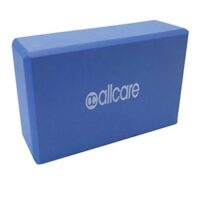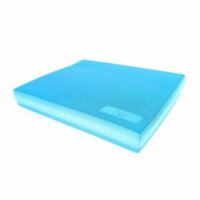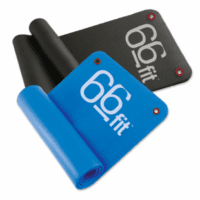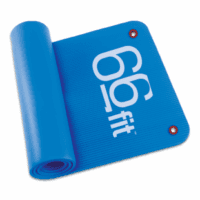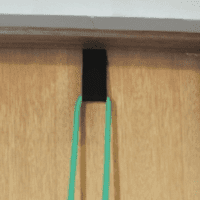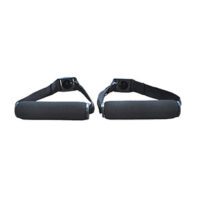Common Tendinopathies
An Overview of Tendon Injuries
Tendinopathies affect individuals across various age groups and physical activities, and these prevalent musculoskeletal conditions cause pain and impaired function, significantly impacting the quality of life. Active individuals, including athletes and those engaged in repetitive occupational tasks, are particularly susceptible to these overuse injuries.
This article aims to provide a comprehensive overview of common tendinopathies, focusing on their specific manifestations and management approaches. By exploring the intricate details of conditions ranging from Achilles Tendinopathy to de Quervain’s Tenosynovitis, we aim to enhance understanding and promote effective treatment strategies for those affected.
Tendinitis vs Tendinopathy
It’s important to note that “tendinitis” is often used interchangeably with tendinopathy, but the suffix “-itis” implies inflammation, which is not always present in tendinopathies. In many cases, the condition involves degeneration of the tendon rather than acute inflammation. As a result, the more accurate term used nowadays is “tendinopathy.”
Tendinopathy Treatments
Treatment approaches for tendinopathies typically focus on managing pain, promoting healing, and addressing contributing factors (e.g., overuse, improper biomechanics). Additionally, treatment approaches have advanced to include more targeted therapies, such as eccentric exercises, physiotherapy, and sometimes regenerative medicine techniques, depending on the specific type and severity of the tendinopathy.
Tendinopathy Classifications
Tendinopathy classifications have evolved to encompass a more nuanced understanding of these conditions. The modern tendinopathy classifications now include the following:
- Tendinitis or Tendonitis is an acute tendon inflammation, usually resulting from overuse, injury, or repetitive strain. It involves the active inflammatory process, and the symptoms can include pain, swelling, and limited range of motion.
- Tendinosis is a chronic degenerative condition of the tendon that occurs when repetitive micro-injuries do not have sufficient time to heal and repair properly. Unlike tendinitis, tendinosis does not primarily involve active inflammation. Instead, it is associated with a breakdown of collagen fibres within the tendon, leading to its structure and composition changes.
- Paratendonitis and Tenosynovitis: These conditions involve inflammation or irritation of the paratendon (the outer layer of the tendon) or the tenosynovium (the sheath surrounding certain tendons). Paratendonitis and tenosynovitis can lead to pain and limited function of the affected tendon and are often associated with repetitive motions or friction.
- Insertional Tendinopathy: This type of tendinopathy occurs at the point where the tendon attaches to the bone (the insertion site). It can involve inflammation, degeneration, or a combination of both at the tendon-bone interface.
- Mid-Substance Tendinopathy: Mid-substance tendinopathy refers to conditions affecting the central portion of the tendon rather than the attachment points. This tendinopathy is often related to chronic overuse and may involve changes in the tendon’s structure without significant inflammation.
It’s important to note that the classification and understanding of tendinopathies continue to evolve with ongoing research. If you suspect you have tendinopathy, it’s best to seek evaluation and advice from a healthcare professional, such as your physiotherapist, who is experienced in tendon conditions.
Seeking Professional Advice
Consult a physiotherapist with a special interest in tendinopathies for personalised advice and treatment.
Specific Tendinopathies
Foot & Ankle
- Achilles Tendinopathy
- Achilles Tendon Rupture
- FHL Tendinopathy
- Peroneal Tendinopathy
- Tibialis Posterior Tendinopathy
Knee
Hip & Groin
Shoulder
Elbow
Wrist & Hand
Conclusion
Tendinopathy is a complex condition requiring careful diagnosis, treatment, and management. Understanding its phases, symptoms, and treatment options is vital for effective recovery.
What to Do?
If you suspect tendinopathy, consult a physiotherapist for a thorough assessment and tailored treatment plan. Remember, early intervention can significantly improve your prognosis and hasten recovery.
Rochedale - Call 38410277
Book Online: RochedaleSalisbury - Call 32751044
Book Online: SalisburySandgate - Call 32691122
Book Online: SandgateRelated Articles
- Tendinopathy: Causes, Symptoms, And Effective Treatments – Discover a broad overview of tendinopathies, including causes, symptoms, and a variety of effective treatment options.
- Effective Tendinopathy Physiotherapy Treatment Strategies – Explore advanced physiotherapy treatment strategies for managing tendinopathies effectively.
- Biceps Tendinopathy: Causes, Symptoms, And Treatments – Gain insights into the specific causes, symptoms, and treatment options for biceps tendinopathy.
- Gluteal Tendinopathy: Causes, Symptoms, And Treatment – Learn about gluteal tendinopathy, its impact, causes, symptoms, and how it can be treated.
- Rotator Cuff Tendinopathy – Understand the specifics of rotator cuff tendinopathy, including its causes, symptoms, and various treatment methods.
- Proximal Hamstring Tendinopathy – Find detailed information on proximal hamstring tendinopathy, including prevention and treatment strategies.
- Peroneal Tendinopathy – We discuss the causes, symptoms, and rehabilitation processes for peroneal tendinopathy, and how to return to sports safely.
- Wrist Tendinopathy – Uncover the range of treatment options for wrist tendinopathy, from early injury treatment to physiotherapy modalities.
- Hip Adductor Tendinopathy – Effective Physio Solutions – Explore the causes, symptoms, and physiotherapy solutions for hip adductor tendinopathy.





